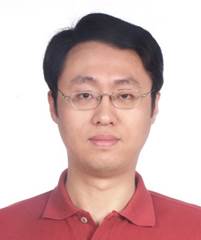SEMINAR
The State Key Lab of
High Performance Ceramics and Superfine Microstructure Shanghai Institute of Ceramics, Chinese Academy of Sciences
中 国 科 学 院 上 海 硅 酸 盐 研 究 所 高 性 能 陶 瓷 和 超 微 结 构 国 家 重 点 实 验 室

Interlayer magnetic coupling of CrXn (X=I, S, Se; n=2,3) van der Waals bilayers
季 威
中国人民大学物理系
时间:2020年 9 月7 日(星期一)上午 10:00
地点:嘉定园区 F 楼 8(1) 会议室
欢迎广大科研人员和研究生参与讨论!
联系人:孙宜阳(69906536)
报告摘要: 
Two-dimensional magnetic materials have attracted tremendous attention since their experimental isolation and measurements in 2017. It becomes clearer that the interlayer magnetic coupling plays a paramount role in terms of magnetic properties of two-dimensional layers. In the literature, several spin-exchange mechanisms were proposed to understand the exchange couplings, e.g. super-exchange and double-exchange. All these mechanisms were developed in materials bonded with strong chemical interactions, e.g. covalent and metallic bonds. It is not clear if these mechanisms work for van der Waals (vdW) gaps where relatively weak vdW interactions govern, which was believed to show inappreciable change of electronic structures. Here, we employed first-principles density functional theory calculations to reveal the interlayer magnetic coupling mechanism at the vdW gaps of CrI3, CrS2 and CrSe2 bilayers. We found an orbital dependent magnetic coupling mechanism in CrI3 and predict that different interlayer orbital interactions led by different stacking orders result in interlayer ferro- and anti-ferro-magnetic couplings. In addition, we found a Bethe-Slater-curve-like relation between the interlayer magnetism and interlayer distance. A Pauli energy term was introduced to the Hubbard model for understanding such BSC-like behaviour. In the last part of this talk, I discuss a recently observed spin-orbit polaron on the surface of Co3Sn2S2, a magnetic Weyl semimetal, which shows a strong diamagnetic behaviour.
主讲人简介:
 Dr. Ji, Wei is a computational physicist, working in the field of surface and interface modeling of low-dimensional materials. His research interests include surface and interface modeling of emerging electronic materials and devices. Recently, he focuses on theoretical modeling of electronic, optical, and vibrational properties of two-dimensional materials. He has been also developing theoretical methods for describing beam effects in scanning transmission microscopy and understanding ultrahigh resolution in noncontact atomic force microscopy. He received his Ph.D in condensed matter physics from the Institute of Physics, Chinese Academy of Science in 2008. Prior to joining Renmin University of China, he spent four years in McGill University as a visiting scholar and then a postdoctoral fellow. He was originally appointed as an Associated Professor by Renmin University in 2010 and was early promoted to Full Professor in 2014. He was supported by the National Young Top-Notch Talent Program in 2014, the National Science Fund for Excellent Young Scholars in 2016 and awarded Chang-Jiang Young Scholars in 2015. He also serves as an Associated Editor of ACS Applied Electronic Materials, an Editorial Board Member of Science Bulletin and trustees in the youth committee and computational materials science division of the Chinese Materials Research Society.
Dr. Ji, Wei is a computational physicist, working in the field of surface and interface modeling of low-dimensional materials. His research interests include surface and interface modeling of emerging electronic materials and devices. Recently, he focuses on theoretical modeling of electronic, optical, and vibrational properties of two-dimensional materials. He has been also developing theoretical methods for describing beam effects in scanning transmission microscopy and understanding ultrahigh resolution in noncontact atomic force microscopy. He received his Ph.D in condensed matter physics from the Institute of Physics, Chinese Academy of Science in 2008. Prior to joining Renmin University of China, he spent four years in McGill University as a visiting scholar and then a postdoctoral fellow. He was originally appointed as an Associated Professor by Renmin University in 2010 and was early promoted to Full Professor in 2014. He was supported by the National Young Top-Notch Talent Program in 2014, the National Science Fund for Excellent Young Scholars in 2016 and awarded Chang-Jiang Young Scholars in 2015. He also serves as an Associated Editor of ACS Applied Electronic Materials, an Editorial Board Member of Science Bulletin and trustees in the youth committee and computational materials science division of the Chinese Materials Research Society.


 沪公网安备 31010502006565号
沪公网安备 31010502006565号